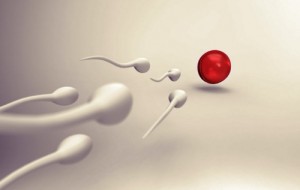A joint team of scientists from The New York Stem Cell Foundation (NYSCF) Laboratory and Columbia University Medical Center (CUMC) has developed a technique that may prevent the inheritance of mitochondrial diseases in children. The study is published online today in Nature.
Dieter Egli, PhD, and Daniel Paull, PhD, of the NYSCF Laboratory with Mark Sauer, MD, and Michio Hirano, MD, of CUMC demonstrated how the nucleus of a cell can be successfully transferred between human egg cells. This landmark achievement carries significant implications for those children who have the potential to inherit mitochondrial diseases. Mitochondria are cellular organelles responsible for the maintenance and growth of a cell. They contain their own set of genes, passed from mother to child, and are inherited independently from the cell’s nucleus. Although mitochondrial DNA accounts for only 37 out of more than 20,000 genes in an individual, mutations to mitochondrial genes carry harmful effects.
Mitochondrial disorders, due to mutations in mitochondrial DNA, affect approximately 1 in 10,000 people, while nearly 1 in 200 individuals carries mutant mitochondrial DNA. Symptoms, manifesting most often in childhood, may lead to stunted growth, kidney disease, muscle weakness, neurological disorders, loss of vision and hearing, and respiratory problems, among others. Worldwide, a child is born with a mitochondrial disease approximately every 30 minutes, and there are currently no cures for these devastating diseases. “Through this study, we have shown that it should be possible to prevent the inheritance of mitochondrial disorders,” said Egli, PhD, co-author of the study and an Senior Researcher in the NYSCF Laboratory. “We hope that this technique can be advanced quickly toward the clinic where studies in humans can show how the use of this process could help to prevent mitochondrial disease.” In this study, the researchers removed the nucleus of an unfertilized egg cell and replaced it with the nucleus of another donor’s egg cell. The resultant egg cell contained the genome of the donor but not her mitochondrial DNA. The researchers demonstrated that the transfer did not have detectable adverse effects on the egg cell, a prerequisite for clinical translation. They achieved this by lowering the temperature of the egg before nuclear transfer, a novel technique. Previous studies report adverse consequences in approximately 50% of the egg cells. Read full article.
 When Sarah Gardner was 34, she started getting really worried about whether she’d ever have kids.
When Sarah Gardner was 34, she started getting really worried about whether she’d ever have kids.
 are at an increased risk for preterm birth and low birth weight. Factors related to the pregnancy, or to the IVF technique itself, may be responsible for the association. Few studies have looked at the effect of culture time on the baby’s birth weight, however.
are at an increased risk for preterm birth and low birth weight. Factors related to the pregnancy, or to the IVF technique itself, may be responsible for the association. Few studies have looked at the effect of culture time on the baby’s birth weight, however.



